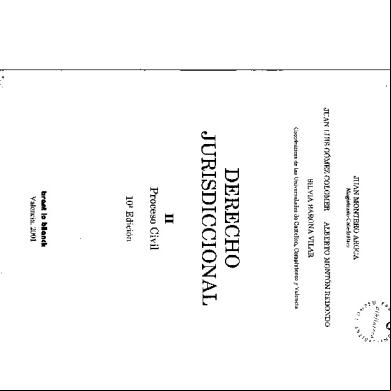This document was ed by and they confirmed that they have the permission to share it. If you are author or own the copyright of this book, please report to us by using this report form. Report 2z6p3t
Overview 5o1f4z
& View 35 Million & Counting as PDF for free.
More details 6z3438
- Words: 702
- Pages: 2
NATIONAL
35 MIWON ANI> COUNTING
• �
-THE FIRST
2016
CENSUS RESULTS ARE RELEASED
ON THE LINES
r�the following in complete sentences: Explain what the term census means.
1.
Census is the official count of the population every 5 years. It asks the age and gender of everyone in the home, how they are related and which official language they speak.
2. Which federal government department is responsible for the census? Statistics Canada is the federal government department responsible for the census.
woften is a census conducted in Canada? � A census is conducted in Canada every 5 years. 4. Wh t:fuformation are residents asked to provide? The census asks the age and gender of everyone in the home, how they are related and which official language they speak.
st at least two examples of what population census results are used for. First, the census is used by businesses and urban planners when building new stores, offices and housing. Meanwhile, researchers use the statistics to look for trends and draw conclusions.
�nd where was the first census conducted in Canada? Canada's first census was conducted in New in 1866.
� the population of Canada in 1871? In 1871, Canada's population was just 3.5 million.
8.
hat was the population of Canada in 2016?
In 2016, Canada's population has reached 35 million. � � hich regions of Canada have grown the most in recent years? In the recent years, the regions of Canada that has grown the most is Alberta (11.6 percent), and Nunavut (12.6 percent) . The other western provinces also exceed the national growth rate. hich region has grown the least in recent years? The Atlantic provinces, by comparison, grew at a snails pace. PEI led the other by 1.9 percent, while NB decreased by 0.5 percent.
here did most people live in 1867? How has this changed since Confederation? The census revealed that almost 29 million Canadians now live in cities and large towns. Only 6 million live in rural area. That's a huge change from the country's early days since Canada was a rural country 150 years ago.
2016/2017: ISSUE 6
WHAT IN THE WORLD? • LEVEL 2
PAGE 5
NATIONA L
35 MIWON AND COUNTING 2016
•
-THE FIRST
CENSUS RESULTS ARE RELEASED
BETWEEN THE LINES An inference is a conclusion drawn from evidence. A plausible inference is .ed by evidence in the article and is consistent with known facts outside of the article. What inference(s) can you draw from the fact that 83 percent of Canadians live in large towns or cities? For me there are 2 inferences from the fact there 83 percent of Canadians live in large town/cities. First of all it provides evidence for Human Environment Interaction, since it is because of the census data that businesses and urban planners use to alter and interact with the land to provide housing, new stores, and facilities that is lacking in the area, leading to urbanization. Lastly, is it a reflection of who we are in the present and how we change as a nation since the Confederation and the first Canadian census in 1866.
JUST TALK ABOUT IT 1.
As you see it, what is the importance of population statistics? Explain.
2. For what reasons might population decline be a problem for a region or country? For what reasons might it be an advantage? Explain. 3. What reasons can you suggest to explain why just 17 percent of Canadians lived in rural areas in 2016? Explain. ONLINE Note: The links below are listed at www.lesplan.com/en/links for easy access. 1.
Explore the historical data on the Statistics Canada website at http://www.statcan.gc.ca/
2. Read a CBC article about the 2016 census and explore additional links at http://www.cbc.ca/news/politics/grenier-2016-census-population-1.3970314 3. Listen to a CBC broadcast about the coming wave of senior citizens at http://www.cbc.ca/player/play/2676323240/ 4. Read "From Start to Finish: An Exclusive Look at the Making of the 2016 Census" at http://www.statcan.gc.ca/eng/sc/video/makingofao16census 5. See if your hometown grew or shrunk over the past five years at http://www.cbc.ca/news2/interactives/canadian-census/
*
6. Watch a Statistics Canada video called "2016 Census: 150 Years of Population Growth in Canada at https://www.youtube.com/watch?v=y4-AT5xhQ5o
PAGE 6
WHAT IN THE WORLD? • LEVEL 2
2016/2017: ISSUE 6
35 MIWON ANI> COUNTING
• �
-THE FIRST
2016
CENSUS RESULTS ARE RELEASED
ON THE LINES
r�the following in complete sentences: Explain what the term census means.
1.
Census is the official count of the population every 5 years. It asks the age and gender of everyone in the home, how they are related and which official language they speak.
2. Which federal government department is responsible for the census? Statistics Canada is the federal government department responsible for the census.
woften is a census conducted in Canada? � A census is conducted in Canada every 5 years. 4. Wh t:fuformation are residents asked to provide? The census asks the age and gender of everyone in the home, how they are related and which official language they speak.
st at least two examples of what population census results are used for. First, the census is used by businesses and urban planners when building new stores, offices and housing. Meanwhile, researchers use the statistics to look for trends and draw conclusions.
�nd where was the first census conducted in Canada? Canada's first census was conducted in New in 1866.
� the population of Canada in 1871? In 1871, Canada's population was just 3.5 million.
8.
hat was the population of Canada in 2016?
In 2016, Canada's population has reached 35 million. � � hich regions of Canada have grown the most in recent years? In the recent years, the regions of Canada that has grown the most is Alberta (11.6 percent), and Nunavut (12.6 percent) . The other western provinces also exceed the national growth rate. hich region has grown the least in recent years? The Atlantic provinces, by comparison, grew at a snails pace. PEI led the other by 1.9 percent, while NB decreased by 0.5 percent.
here did most people live in 1867? How has this changed since Confederation? The census revealed that almost 29 million Canadians now live in cities and large towns. Only 6 million live in rural area. That's a huge change from the country's early days since Canada was a rural country 150 years ago.
2016/2017: ISSUE 6
WHAT IN THE WORLD? • LEVEL 2
PAGE 5
NATIONA L
35 MIWON AND COUNTING 2016
•
-THE FIRST
CENSUS RESULTS ARE RELEASED
BETWEEN THE LINES An inference is a conclusion drawn from evidence. A plausible inference is .ed by evidence in the article and is consistent with known facts outside of the article. What inference(s) can you draw from the fact that 83 percent of Canadians live in large towns or cities? For me there are 2 inferences from the fact there 83 percent of Canadians live in large town/cities. First of all it provides evidence for Human Environment Interaction, since it is because of the census data that businesses and urban planners use to alter and interact with the land to provide housing, new stores, and facilities that is lacking in the area, leading to urbanization. Lastly, is it a reflection of who we are in the present and how we change as a nation since the Confederation and the first Canadian census in 1866.
JUST TALK ABOUT IT 1.
As you see it, what is the importance of population statistics? Explain.
2. For what reasons might population decline be a problem for a region or country? For what reasons might it be an advantage? Explain. 3. What reasons can you suggest to explain why just 17 percent of Canadians lived in rural areas in 2016? Explain. ONLINE Note: The links below are listed at www.lesplan.com/en/links for easy access. 1.
Explore the historical data on the Statistics Canada website at http://www.statcan.gc.ca/
2. Read a CBC article about the 2016 census and explore additional links at http://www.cbc.ca/news/politics/grenier-2016-census-population-1.3970314 3. Listen to a CBC broadcast about the coming wave of senior citizens at http://www.cbc.ca/player/play/2676323240/ 4. Read "From Start to Finish: An Exclusive Look at the Making of the 2016 Census" at http://www.statcan.gc.ca/eng/sc/video/makingofao16census 5. See if your hometown grew or shrunk over the past five years at http://www.cbc.ca/news2/interactives/canadian-census/
*
6. Watch a Statistics Canada video called "2016 Census: 150 Years of Population Growth in Canada at https://www.youtube.com/watch?v=y4-AT5xhQ5o
PAGE 6
WHAT IN THE WORLD? • LEVEL 2
2016/2017: ISSUE 6










